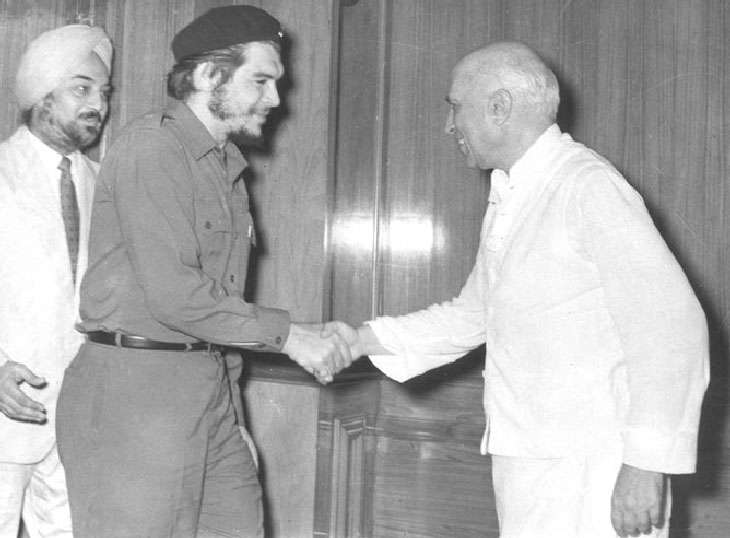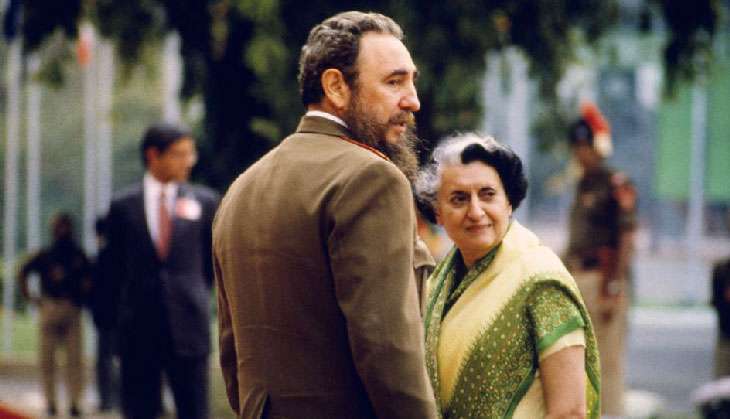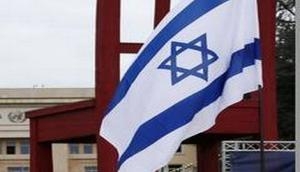End of an era: Cuban leader Fidel Castro will be fondly remembered in India

The bête noire of eleven American presidents - from Eisenhower to Obama - and the flag bearer of anti-imperialist struggles of the past century, Fidel Castro died on 25 November in Havana, after a prolonged illness. He will remain a symbol in countries in the global south, particularly in Latin America. The Cuban revolution brought to Left-wing politics the romance of the possibility of radical change, inspiring the sixties generation around the world.
As a tribute to his role in supporting national liberation struggles in many third world countries, he was elected to preside over the summit of the Non Aligned Movement of September 2006.
Castro's Indian connection
Before the Cuban revolution happened, there was the non-aligned movement was developing in the 1950s with Jawaharlal Nehru, Nasser and Suharto leading the movement which was very sympathetic to nationalists every where in the world. Fully aware of this, the Cubans had sent Che Guevara on a mission to India in late 1959.

Che was received with much sympathy in India. Scarcely a year later, in 1960, India opened a diplomatic mission in Cuba.
The same year, Castro, the leader of the Cuban revolution, travelled to New York for the UN General Assembly. In New York, he was denied accommodation by many hotels and had to move to a small hotel. On hearing of this, Jawaharlal Nehru, India's then Prime Minister, drove to down to meet Castro. Castro fondly remembered this, saying he was the first leader from the third world to come and meet him and extend moral support.
Also read -Fidel is dead: Here's how the world reacted
In 1973, Castro was on a trip to Vietnam and took a stopover in Delhi. He fondly remembered the warm reception by Indira Gandhi and her advisors; in fact, during the dinner news came of the military coup in Chile and the assassination of Salvadore Allende, a close ally of Cuba. The reaction of indignation expressed by Indira Gandhi and her officials endeared Nehru's daughter to Castro. Like Castro, Indira Gandhi also feared that the Americans may try to assassinate her due to her uncompromising stance on US interference in the third world.

Castro: the birth of a revolutionary
In the early 1950s, Fidel Castro, who started off as a lawyer, was passionately active in the Cuban Peoples Party (inspired by Jose Marti a socialist poet). He was a nationalist. In 1952, he stood for parliamentary election but the election was annulled after a coup d'etat by colonel Fulgencio Batista. The coup lead to violent repression and deportations. At that time the Cuban economy was controlled by American companies and North American banks and some 500,000 Cubans were unemployed.
Capitalising on the Batista government's unpopularity, Fidel Castro organised an insurgent movement and led in an attack on the Moncada military barracks in Santiago de Cuba on 26 July, 1953. The assault failed badly, dozens of the revolutionaries were killed and the survivors fled to the mountains of the Sierra Maestra, where they were tracked down and arrested. Fidel too was arrested and sentenced to a 15-year prison term.
He served a sentence of two years and was released later in an amnesty, after which he moved to Mexico. Living there in exile, Castro met the Argentine doctor Che Guevara. They formed a revolutionary organisation called the 'Movement of 26 July' and plotted an armed overthrow of the Batista regime.
On 1 January, 1959, Batista ceded power and fled Cuba. Fidel Castro and his revolution took over. Following this, Castro passed an anti-racial discrimination law, which made him very popular with the blacks and people of mixed parentage. But an even more popular measure introduced by the new Cuban government was agrarian reform leading to redistribution of land.
The enemy of America
However, while Cubans loved agrarian reform, Cuba's neighbour, the US, hated it. Tensions developed immediately with the US, which demanded immediate compensation for the land lost by its companies under the land reform. Castro nationalised factories involved in sugar and cigar.
The United states imposed a crippling embargo in the wake of the Cuban Revolution; the most severe and longest running US trade embargo imposed on any nation except China. A close trade arrangement with the Soviet Union in 1960 helped Cuba stave off US hegemony in the region.
The US even backed the unsuccessful Bay of Pigs invasion in 1961, and, in the thick of the cold war, the Cuban Missile Crisis a year later brought the world to the brink of nuclear war. Castro survived a crippling US trade embargo as well as dozens, possibly hundreds, of assassination attempts. None of this diminished Castro's resolve to defy America.
This stance of openly standing up against US domination propelled Castro to the forefront of Latin America's quest for social justice throughout the politically charged decades that followed World War II.
In the early 1960s Cuba organised a Tri Continental conference to support revolutionary, nationalist and non-aligned movements in the third world, from Angola to Nicaragua. Castro supported the progressive governments of Salvador Allende in Chile, Maurice Bishop in Grenada and the ANC during the apartheid years. He also supported the unrest against conservatives in both Venezuela and Argentina.
Rebuilding Cuba
His greatest legacy is free healthcare, a highly developed healthcare system and education, giving Cuba some of the world's best human development figures. University enrollment became higher than in many more developed countries.
Also read - 7 bizarre ways the CIA tried to kill Fidel Castro & failed
Castro's legendary "literacy brigades" helped invigorate the countryside. Infant mortality rates plummeted and life expectancy improved massively to equal that of the United States.
In the face of huge odds facing its economy, Cuba vigorously supported outstanding cinema, music and dance training and performance arts. It is said that Gabriel Garcia Marquez would not not publish a book without first showing Fidel Castro his manuscript.
The ugly underside
The US embargo and the CIA plots made Castro's regime tighten the leash on democratic liberties and press freedom. Cuban dissidents also paid a heavy price. A one party state called the shots and no independent trade unions were permitted.
The neighbourhood-based citizen-controlled Committees for the Defence of the Revolution became a huge system of surveillance on society.
Also read -In pictures: A look back at the life of Cuban revolutionary Fidel Castro
The collapse of the Soviet Union in 1991 caused a major economic crisis for Cuba, with some 35% of Cuba's GDP affected. Due to the abrupt end to Moscow's subsidies to Cuba, Castro agreed to allow some minor economic liberalisation to attract foreign investment. Tourism expanded to help Cuba survive.
Now, with the big leader of the Cuban revolution gone, calls for more democratisation will follow.
First published: 26 November 2016, 20:20 IST





![BJP's Kapil Mishra recreates Shankar Mahadevan’s ‘Breathless’ song to highlight Delhi pollution [WATCH] BJP's Kapil Mishra recreates Shankar Mahadevan’s ‘Breathless’ song to highlight Delhi pollution [WATCH]](https://images.catchnews.com/upload/2022/11/03/kapil-mishra_240884_300x172.png)

![Anupam Kher shares pictures of his toned body on 67th birthday [MUST SEE] Anupam Kher shares pictures of his toned body on 67th birthday [MUST SEE]](https://images.catchnews.com/upload/2022/03/07/Anupam_kher_231145_300x172.jpg)






